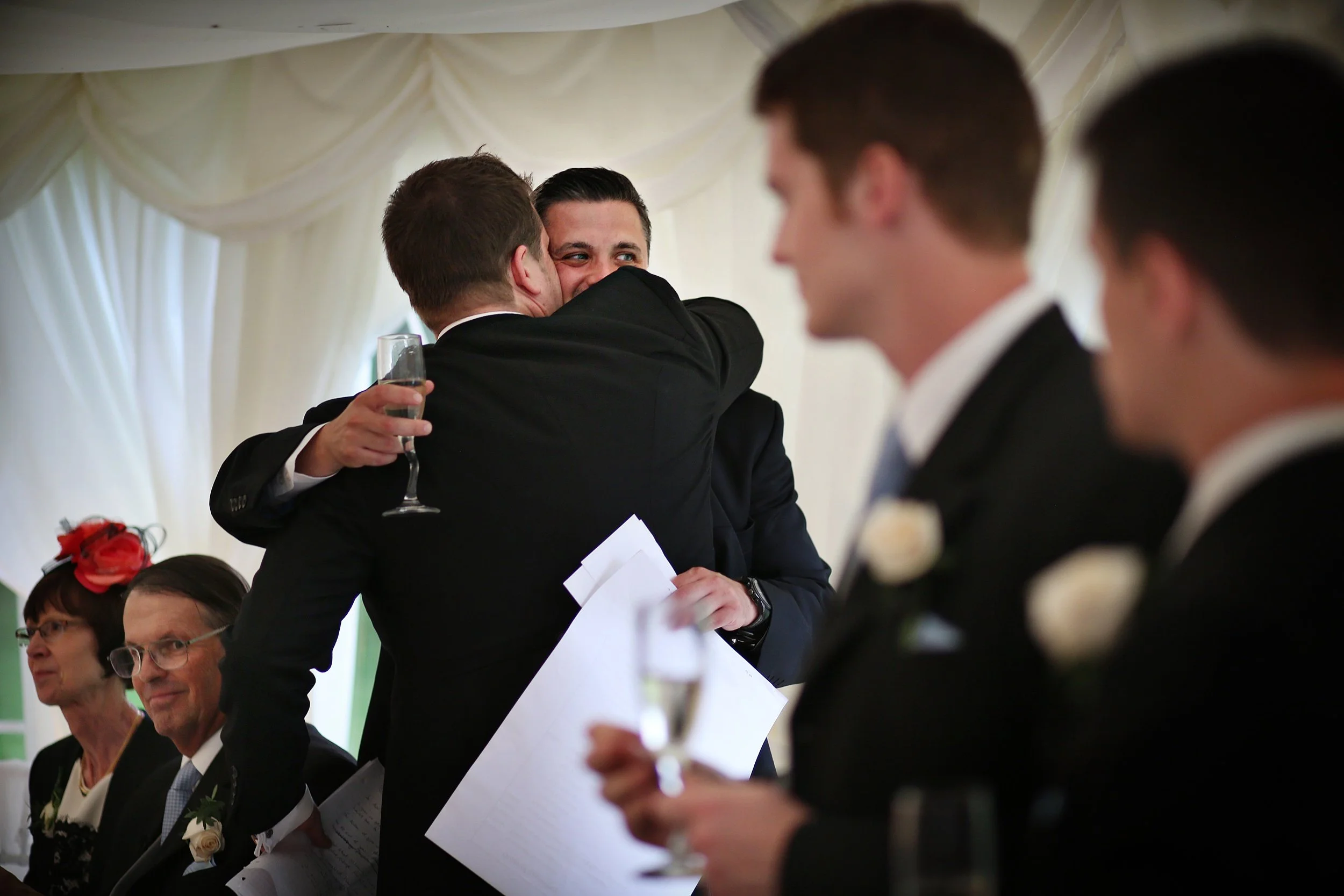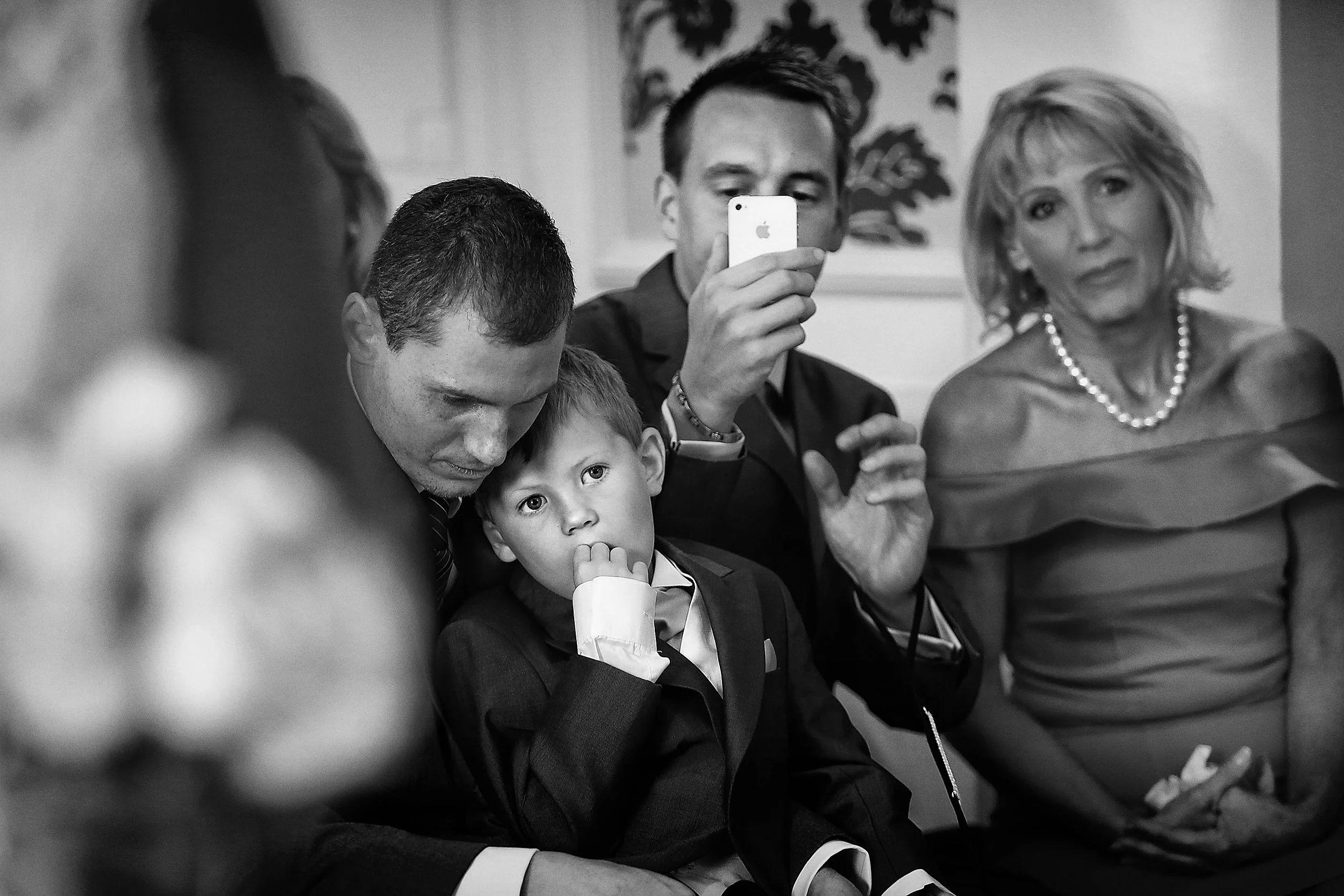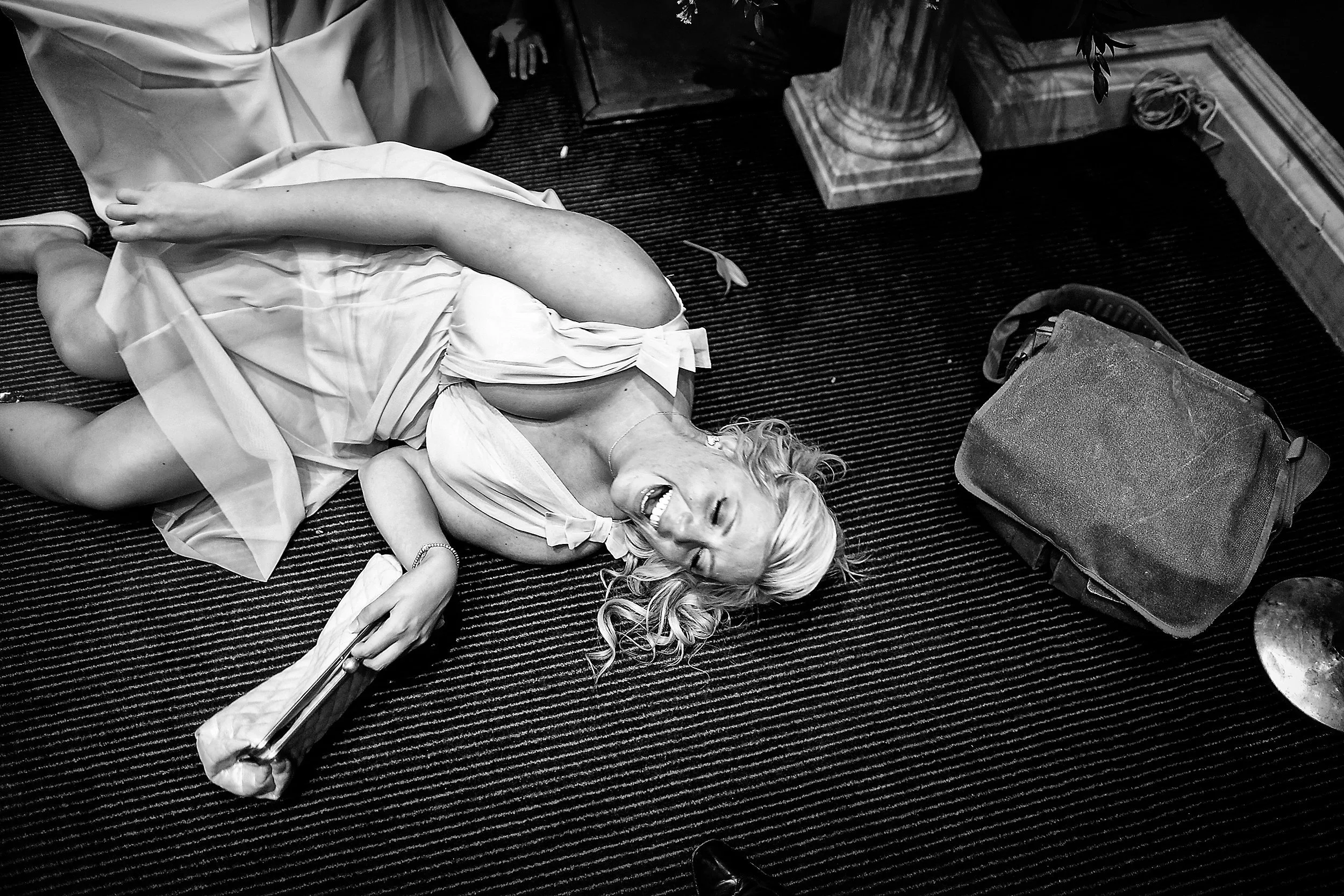Photographically, if you want to give your subject a higher presence or perhaps power within a frame, you could elect to choose a lower camera position, which also serves to isolate a subject. It doesn’t work in all environments and for all situations or subjects, but it’s a great way to bring a dynamic feeling to your compositions. For this particular photograph, the ceremony and singing had reached a dramatic pitch, and so I sank to my knees to capture this moment where the bride, with eyes closed, looks perfectly enveloped in the moment. I remember this wedding as being one of those times where the freedom to move within a church, made for a collection of final celebratory pictures that had a definite feeling about them in terms of the sound of a picture, where hopefully the viewer can sense the occasion in a multi-dimensional sense beyond simply the still image.
Available metadata: f1.4, 1/125, +1, ISO 200, 24mm
One of the most important pieces of advice I gleaned from photojournalists early on in my career was to stay with the story, as often what happens after the frame you think has told the story, is just as important if not more. This photograph was taken at the cake-tasting station, where there was a plethora of pastries and sweet treats. I noticed this guest making her way along the multitude of offerings until she spied the one she wanted to try. I really like the tasting picture on the left, as this says everything about this feature of the wedding, but I stayed with my camera trained upon her clear delight following a spoonful of the chosen cake. It becomes quite literally a delicious diptych that I believe works well as a pair. Self-critique: I’m happy with the composition, though it’s unusual that I should make reportage photographs in a portrait orientation. I wonder whether in landscape, I’d have captured more of the context of the tasting-station?
Available metadata: f1.4, 1/125, +0.67, ISO 1250, 24mm
In photographic composition, layers refer to the different visual elements within an image that create depth, dimension, and interest. Layers can create more visually engaging photographs and, as in this case, add a depth that is more intriguing than simply a picture of the groom embracing a friend within a tight zoomed shot. You also open up your storytelling opportunities by introducing more characters or context to a photograph. There are six key people from this wedding in one picture; parents, a groom, his brother-in-law and the two best men. Self-critique: I try not to let important characters fall out of frame or be too close to edges where that could happen. Just a small step back or a slight shift of framing to the left would have prevented the mother of the groom from practically touching the left edge of this picture.
Available metadata: f1.8, 1/125, ISO 500, +0.33, 85mm
I wince slightly when, prior to the processional, the ‘celebrant’ asks the congregation to resist using their cameras during the ceremony. Partly, it's because immediately following the request, the celebrant looks toward me and says something along the lines of, "We have a professional here today, and he will take all the pictures you need." At that point, I can feel a hundred or so pairs of eyes look at me as if it's a photographer's dictate. I'd much rather be left out of the preflight safety announcements and have the couple's perfectly reasonable request, be the reason guests observe the no-cameras rule. I don’t own a couple, or their day and the pictures I make are the pictures I make regardless of someone else being present with their own camera. Moments like this or, more pertinently, later during the day when you find people around you want to take pictures, embrace it. Invite them in even, if appropriate, as you’ll find guests are far more generous toward you and your lens if you don’t come across as an overly precious photographer.
Available metadata: f2.5, 1/125, ISO 1250, -0.67, 85mm
MORE ONE MINUTE WORKSHOPS RELEASED EVERY WEEK
Look around the space you’re photographing. Isolate a scene and see how many characters within your frame can tell alternative stories to each other through their actions and interactions. Here, I see a father who appears to be enveloped by his own thoughts; his son, the page boy sitting on Dad’s lap, is looking toward the celebrant equally wistfully. A groomsman is busy filming the ceremony, and to the right, the bride’s mother seems equally visually trained on the celebrant as per the young lad. I’ve kept the very edge of the bride and groom to the left of the frame to give this composition a feeling of depth. Self-critique: I’m not overly fond of the head to the left of the frame, which appears slightly from behind the figure standing in the foreground. A slight shuffle to my left could have prevented this.
Available metadata: f2.8, 1/125, +0.33, ISO 1000, 130mm
There is nothing necessarily gratifying about this composition if you were to look at it from a purely technical and literal standpoint, but there’s an energy I like, so as a snapshot, it works well. Post meal, this bridesmaid had just fallen from her chair laughing and I was reasonably close by, walking the room sporting a wide-angle lens. I tend to ‘patrol’ rooms post-wedding breakfast, as this sort of scene is not as unusual as you might imagine. I keep a wider-angle camera-lens combination in my hands as I wander so that it’s ready for these less composed snapshot moments. Self-critique: It’s quite a messy photograph in terms of clutter, which can be the nature of snapshots. There’s much room to the right, when had I included more frame to the left instead, I would have included the bridesmaid’s feet. Perhaps a tighter crop would have taken away my foot and the hand top frame from somebody else, though chaos does, I think, add to the energy.
Available metadata: f1.6, 1/125, ISO 2000, 24mm
I’ve often mooted to couples when discussing what they desire from a wedding photographer, that they could perhaps think of my camera as another groomsman’s eyes. By that, I mean that often I’ll make photographs that are reasonably close in terms of my physical proximity. Pictures made in this manner can bring energy to a composition. Much quoted by many photographers (and I’ll be just a.n.other voice in doing so), the late war photographer Robert Capa said; “If your pictures aren't good enough, you're not close enough.” Close proximity to your story or subject can create a stronger emotional connection and by filling a frame essentially with the subject, you can convey intimacy, intensity, and emotion more effectively. Smaller camera systems can be an advantage here, as it’s arguable that you’re less intimidating as a photographer, and this photograph was the first wedding image I made with Fujifilm’s X100S rangerfinder-styled mirrorless camera.
Available metadata: f4, 1/420, -1, ISO 400, 23mm






